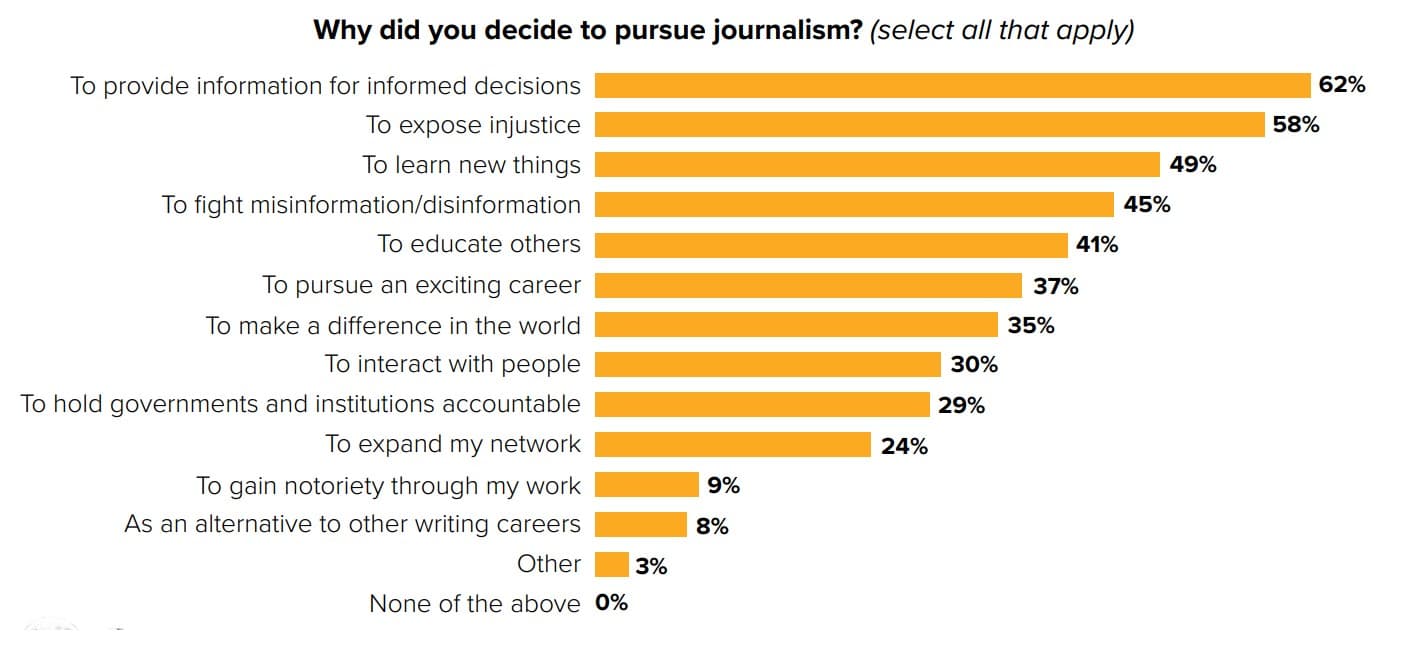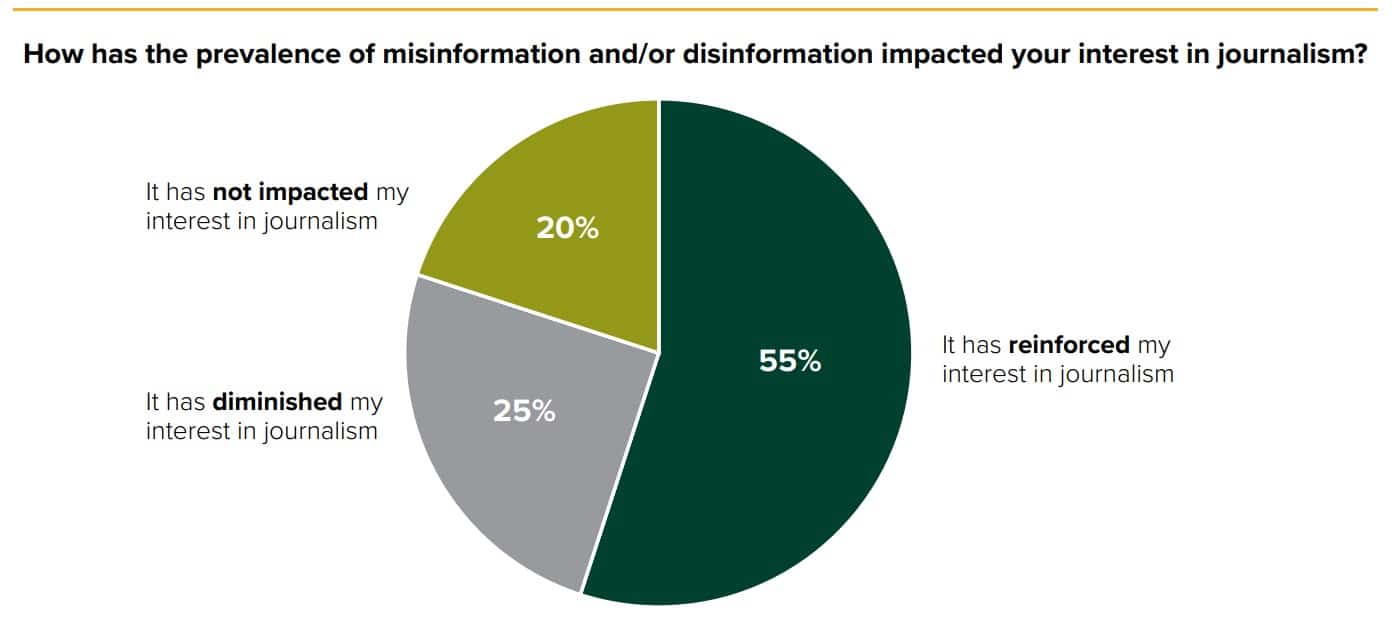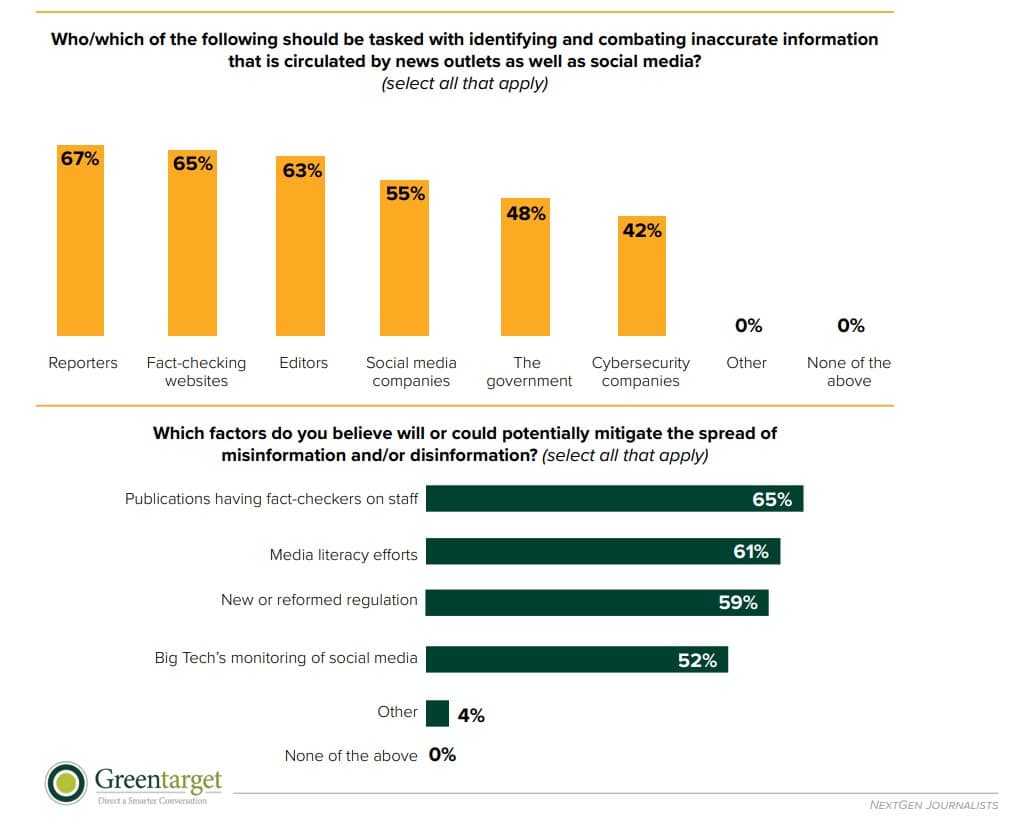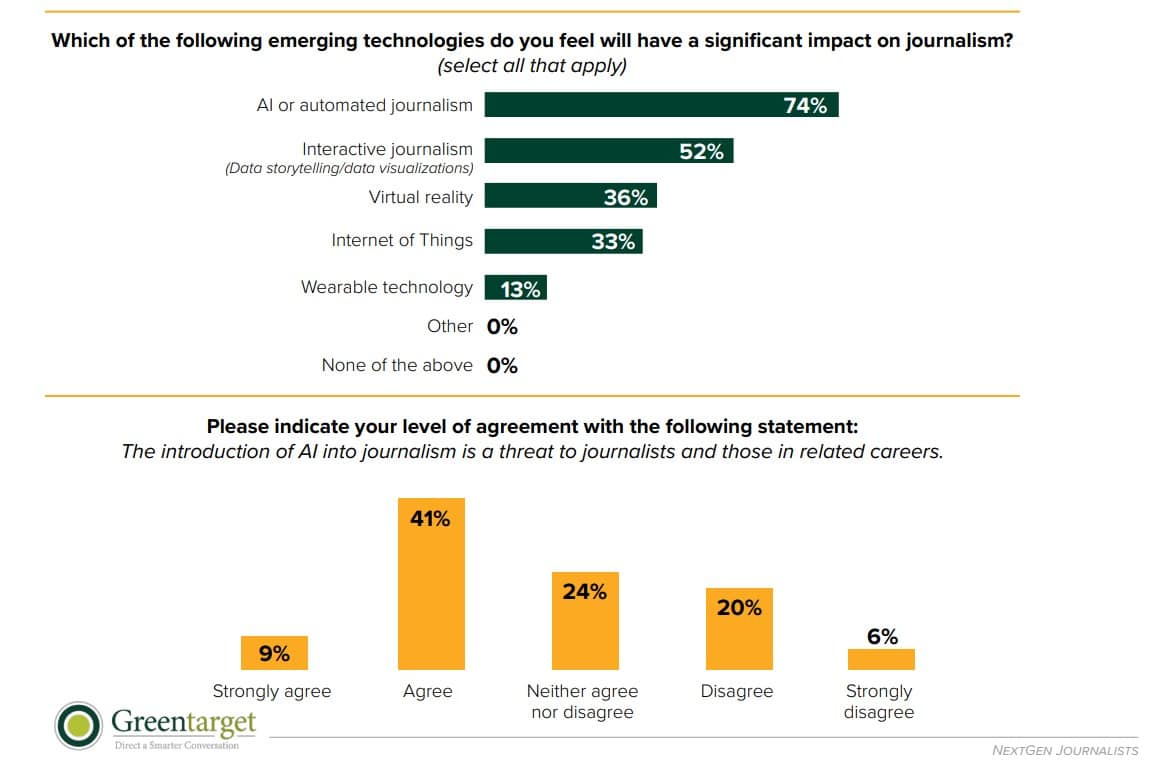It’s not an ideal time to be entering the field of journalism—declining public trust in the media, concerns about the impact of technology, and shrinking newsrooms are among many concerns—but new research from professional services communications firm Greentarget finds that the next generation of journalists remains optimistic about the future of their profession, with a decisive majority (72 percent) holding a positive outlook for journalism.
Findings from the firm’s new report, Next-Gen Journalists: Navigating Misinformation, AI & The Future of Journalism, come as the industry confronts challenges from misinformation and disinformation to fears that generative AI could undermine journalism jobs.

Notably, future journalists are split when it comes to AI
- About three-quarters (74 percent) expect AI to have a significant impact on the industry
- Half of those surveyed believe the technology poses a threat
- The majority already use AI tools in their reporting
The report, which surveyed 100 journalism students and new professionals, uncovers the perspectives of this rising class on issues and perspectives currently dividing the field, and their outlook on where the profession is heading. The new research, which follows the firm’s reports in 2020 and 2021 on the toll that “fake news” has taken on seasoned journalists, reveals that while next-gen journalists are largely clear-eyed about the challenges ahead, they are also passionate about their work and are thankfully approaching it with the traditional intentions of serving the public and holding power to account.

“The perspectives of the next generation are critical, as these journalists will be the ones shaping the industry’s response to existential crises—from plummeting trust to struggling business models—that are already taking a toll on the media,” said Lisa Seidenberg, Greentarget’s director of media relations, in a news release. “It’s heartening to see that they’re not only thinking about these challenges now, but are also enthusiastic about finding solutions.”
Among the report’s other key findings:
Traditional journalistic methods still outweigh social media for reporting
Reporting in the field (94 percent), drawing from primary-source networks (92 percent) and looking to experts and think tanks (92 percent) were the most widely-used resources for young journalists, outweighing social platforms when it comes to generating story ideas and sourcing and/or verifying information.
DEI is a priority
Nearly six in 10 are concerned about the current level of racial, gender and economic representation in journalism and 85 percent are taught the importance of having diverse sources in their journalism education.
Many expect misinformation and disinformation to worsen
While nearly half expect the prevalence of fake news to grow in the next year, nine in 10 also plan to do what they can to combat its spread.

Next-generation journalists are purpose-driven
Among the top motivations for pursuing journalism are providing information to the public for informed decisions (62 percent), exposing injustice (58 percent) and fighting misinformation and disinformation (45 percent).





